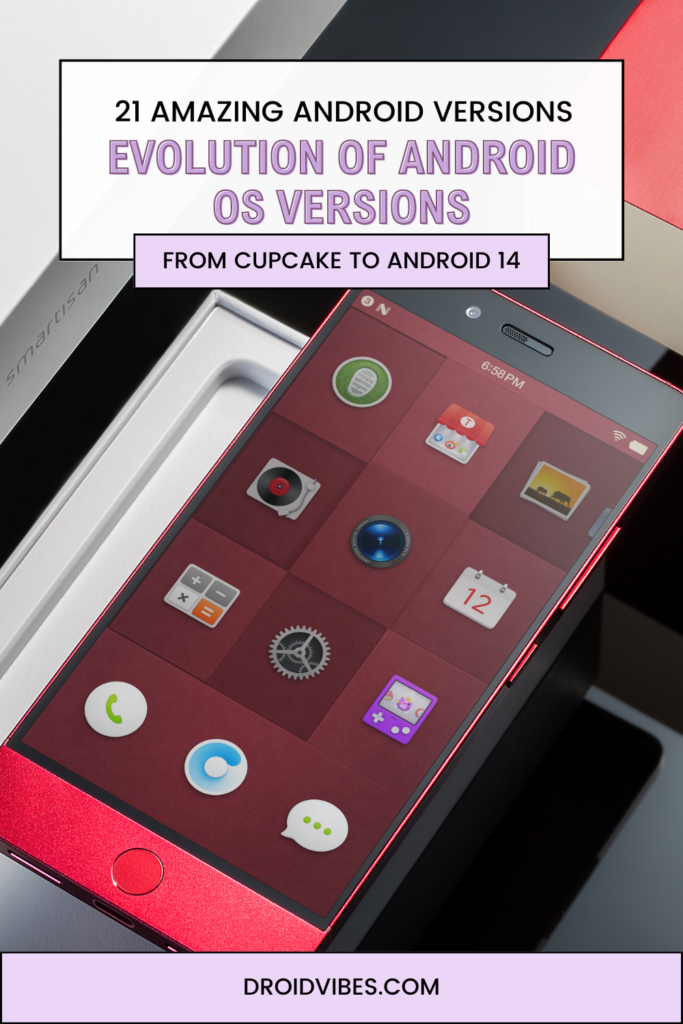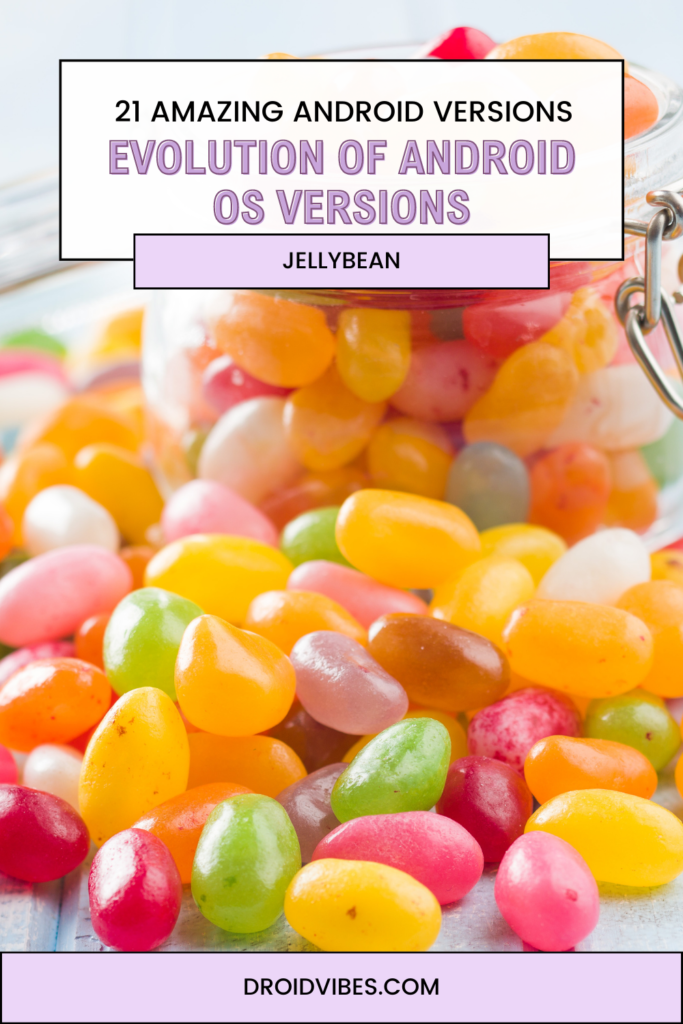
Here is the comprehensive history of Android OS versions from its pre-Google version to the latest version. Sit down and relax (and don’t get hungry) as you go through the Android OS version journey.
The Genesis of Android OS Versions (2003-2008)
Before Google’s involvement, Android Inc. was founded in October 2003 by Andy Rubin, Rich Miner, Nick Sears, and Chris White. Their intention? To create an advanced OS for digital cameras. However, they quickly pivoted to a mobile phone platform due to the vast potential in the burgeoning smartphone market. Google saw this potential too and acquired Android Inc. in 2005, aiming to secure its place in the mobile space.
Don’t Want To Read? Would you Rather Watch a Video?
Here is a Video about the Evolution of Android OS Versions:
Android OS Verions 1.0 & 1.1 (2008)
In September 2008, the first-ever Android smartphone, the HTC Dream (or T-Mobile G1 in some regions), was unveiled. It brought forth the Android 1.0 OS. This version introduced users to the Google Play Store (known as Android Market back then) and other services like Google Maps and Gmail. Android 1.1 followed shortly after in February 2009, bringing minor updates and refinements.
Android 1.5: Cupcake (2009)

Cupcake, released in April 2009, began the delightful tradition of naming Android versions after desserts. This version brought in significant changes such as an on-screen keyboard, video recording, and playback capabilities, and widgets that could be embedded on the home screen.
Android 1.6: Donut (2009)

Launched in September 2009, Donut focused on user-centric updates. It saw the introduction of universal search, a vastly improved Android Market, and support for CDMA networks, which broadened the Android device family.
Android OS Versions 2.0-2.1: Eclair (2009-2010)

Arriving in October 2009, Eclair refined the user experience further. This update brought live wallpapers, enhanced Google Maps with turn-by-turn navigation, and a new browser UI, making the web experience seamless.
Android 2.2: Froyo (2010)

Froyo, short for “Frozen Yogurt”, released in May 2010, was a testament to Android’s growth. It introduced features like USB tethering, the Android Cloud to Device Messaging service, and major speed improvements.
Android 2.3: Gingerbread (2010-2011)

This spicy update from December 2010 showcased a revamped UI, emphasizing simplicity and speed. NFC support was introduced, and the front-facing camera became standardized, opening the gates for video calls.
Android OS Versions 3.0-3.2: Honeycomb (2011)

In February 2011, Honeycomb represented a significant shift as it was designed primarily for tablets. With a futuristic holographic interface, it catered to larger screens and introduced the world to the ActionBar, offering quick access to important functions.
Android 4.0: Ice Cream Sandwich (2011)

Blending the best of Gingerbread and Honeycomb, Ice Cream Sandwich, or ICS, hit the scene in October 2011. The Holo design language was in full swing, and features like Face Unlock and a revamped notification system showcased Android’s intent to be innovative.
Android 4.1-4.3: Jelly Bean (2012-2013)

Starting from July 2012, Jelly Bean iterations focused on refining the user experience. With “Project Butter”, everything became smoother. The predictive keyboard, expandable notifications, and Google Now marked a major step forward for the platform.
Android 4.4: KitKat (2013)

Launched in October 2013, KitKat emphasized optimization, ensuring the OS could run on a wider range of devices, even those with just 512MB of RAM. It brought a new “immersive mode”, where apps could utilize the full screen and the Google Now Launcher.
Android OS Versions 5.0-5.1: Lollipop (2014-2015)

November 2014’s Lollipop was a visual feast. It introduced the world to Material Design, with bold colors and lively animations. Beyond aesthetics, it added multiple device support, the ART runtime, and revamped notifications.
Android 6.0: Marshmallow (2015)

Marshmallow, released in October 2015, was about refining and enhancing the user experience. Key features included granular app permissions, native fingerprint support, and the power-saving feature called Doze.
Android OS Versions 7.0-7.1: Nougat (2016-2017)

Hitting the market in August 2016, Nougat focused on functionality. It offered a split-screen mode for multitasking, enhanced VR support with Daydream, and a new settings menu.
Android OS Versions 8.0-8.1: Oreo (2017-2018)

Unveiled in August 2017, Oreo was sweeter and smarter. With features like picture-in-picture mode, notification dots, and major improvements in battery life through background task limitations, it was a robust upgrade.
Android 9: Pie (2018)

Launched in August 2018, Pie emphasized intelligence and simplicity. It brought forth Adaptive Battery, navigation gestures, and the Digital Wellbeing suite to help users understand their tech habits.
Android 10 (2019)
Released in September 2019, Android 10 broke the dessert-themed names. It was a milestone release with a system-wide dark mode, enhanced privacy settings, and a focus on foldable screen compatibility.
Android 11 (2020)
Unveiled in September 2020, Android 11 centered on communication and control. It introduced a dedicated conversation section in notifications, one-time permissions, and built-in screen recording.
Android 12 (2021)
Launching in 2021, Android 12 was designed around personalization. With the introduction of “Material You”, users could tailor their device’s look based on their wallpaper. Other notable features included more transparency around data usage and enhanced privacy controls.
Android 13 (2022)
Android 13 goes beyond the phone—bringing all of the devices in your life together seamlessly—with features that enhance your messaging, audio, and multitasking experiences.
Android 14 (2023)
Android 14 may seem to be just an incremental increase of Android 13. But here are the best features of Android 14. Photo Picker, Notification Flashes, Camera and Battery Life Improvements, Lockscreen Customizations, Magic Compose, App Pair, Charging Pill, Auto-confirm Unlock,
Separate Ring and Notification volumes.
Android OS versions from a small startup to the dominant force in mobile operating systems showcase its adaptability, innovation, and commitment to enhancing the user experience. As it continues to evolve, one thing is for sure – Android’s story is far from over.